The NCPA had made its archival catalogue available online. Here is an exclusive peek into the preservation vault that has been meticulously digitised, so that everyone can enjoy the vast repository of sound and symphony
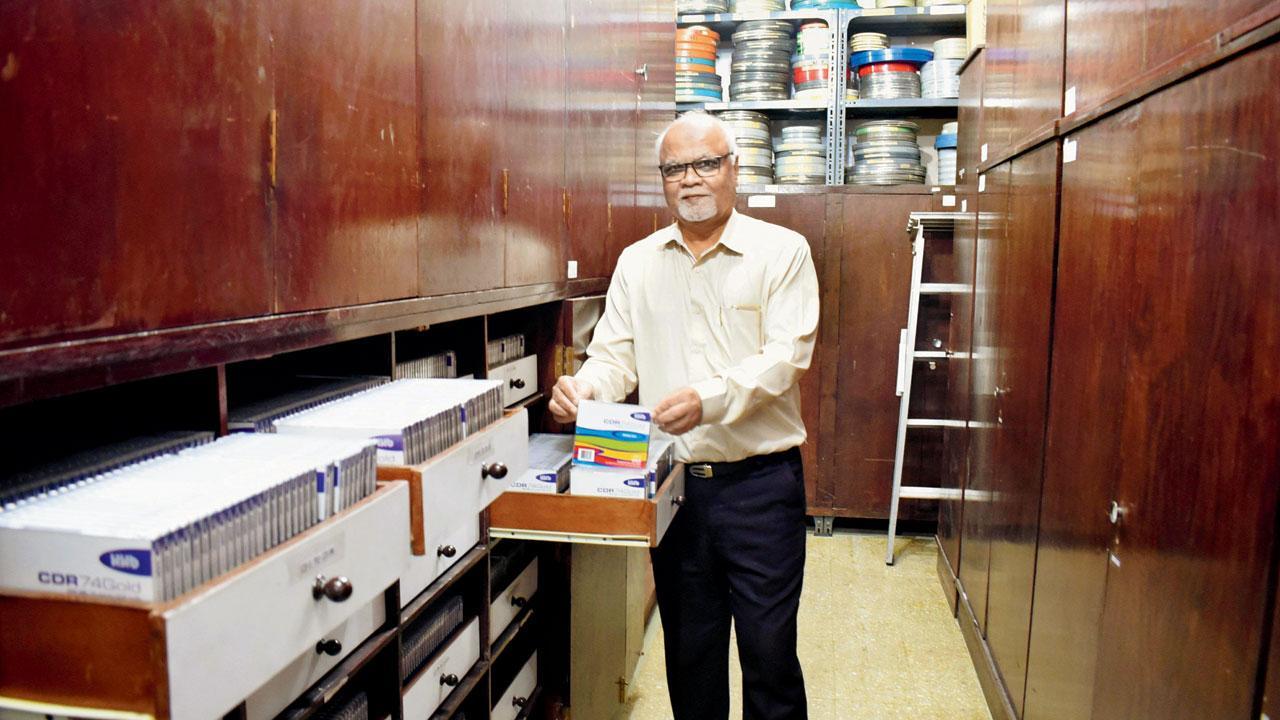
Nayan Kale, chief executive, Technical Department, NCPA, at the preservation vault comprising audio and film material. Pics/Sameer Markande, NCPA
Archiving is a delicate matter, and only those invested in it, will understand its rigour. There’s an exhaustive amount of work that goes into it—documenting, recording, storing, cataloguing and digitising. In the end, the hope is that someone will put it to good use, perhaps even better than imagined.
ADVERTISEMENT
Nayan Kale, chief executive, Technical Department at the NCPA, is however sceptical. For decades now, he has manned a rare repository of great genius and artistry, preserved in a room at the performing centre in Nariman Point. Audio recordings of the legendary musicians Bal Gandharva, Zhohra Bai, Bismillah Khan, Janaki Bai, Begum Akhtar, Gangubai Hangal, Sundara Bai, Pyara Jan, Rasoolan Bai, Pyara Saheb, Roshanara Begum and the renditions of the Symphony Orchestra of India among others, rest in sync and harmony here. If this room had a voice, it would sing a new song daily.
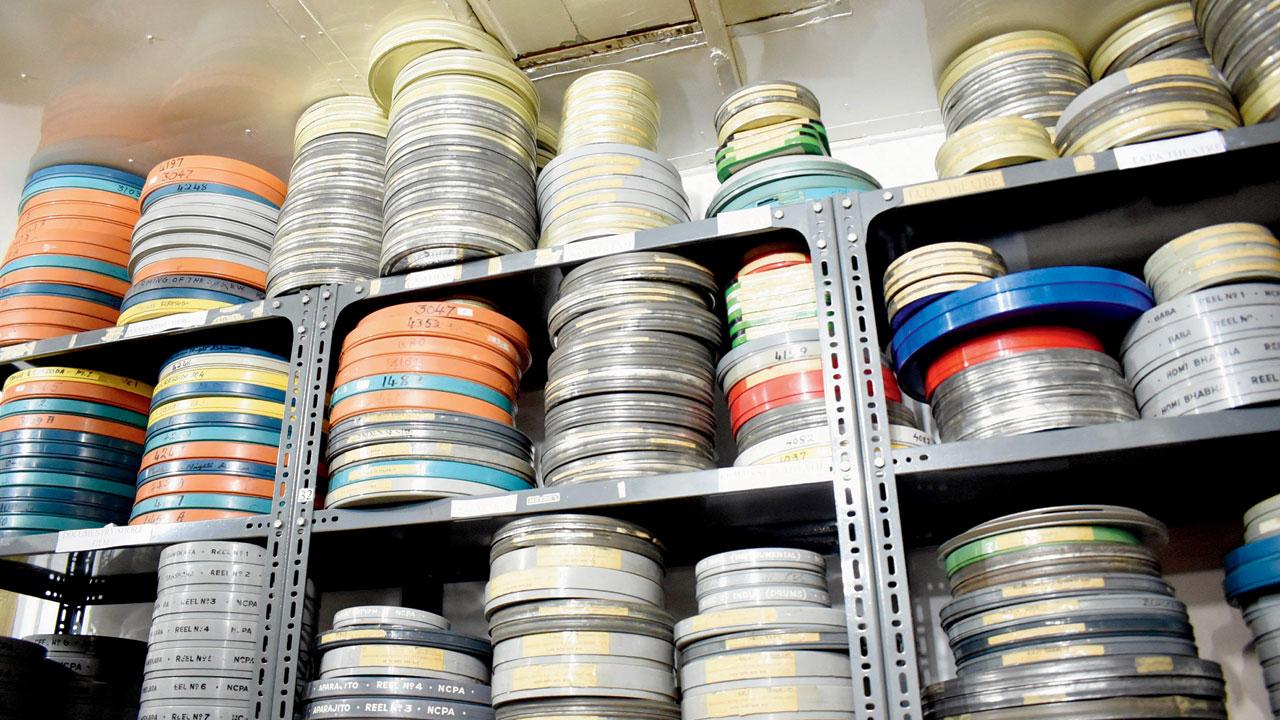
The 16 and 35 mm film reels, include Bharatanatyam performances by legendary artistes, as well movies by filmmakers like Satyajit Ray
But, beyond the scholars, researchers and artistes, rarely anyone has bothered to explore the body of work it has to offer. “Browsing archives is still the pursuit of a few serious men and women,” Kale tells us, when we meet him on a weekday morning, “The new generation prefers to source everything online.” There’s a hint of remorse, but Kale doesn’t show it. Instead, in keeping with the vision of NCPA chairman Khushroo N Suntook—who wants “preserve the archives for posterity, and keep increasing its research value”—Kale has studiously undertaken the task of digitising the material in their preservation vaults. “We have three different vaults here—one comprises audio and film; the second has photographic material, and the third has a collection of paintings,” shares Kale.
Only recently, a catalogue of the digitised audio content worth 6,000 hours and sourced from 5,622 tapes, 1,396 cassettes, and over 120 CDS covering a range of music styles, was made available on the NCPA’s website. One can now access the archive for free by simply filling an online form, following which they will be invited to the NCPA at a given date and time to listen to the said recording.
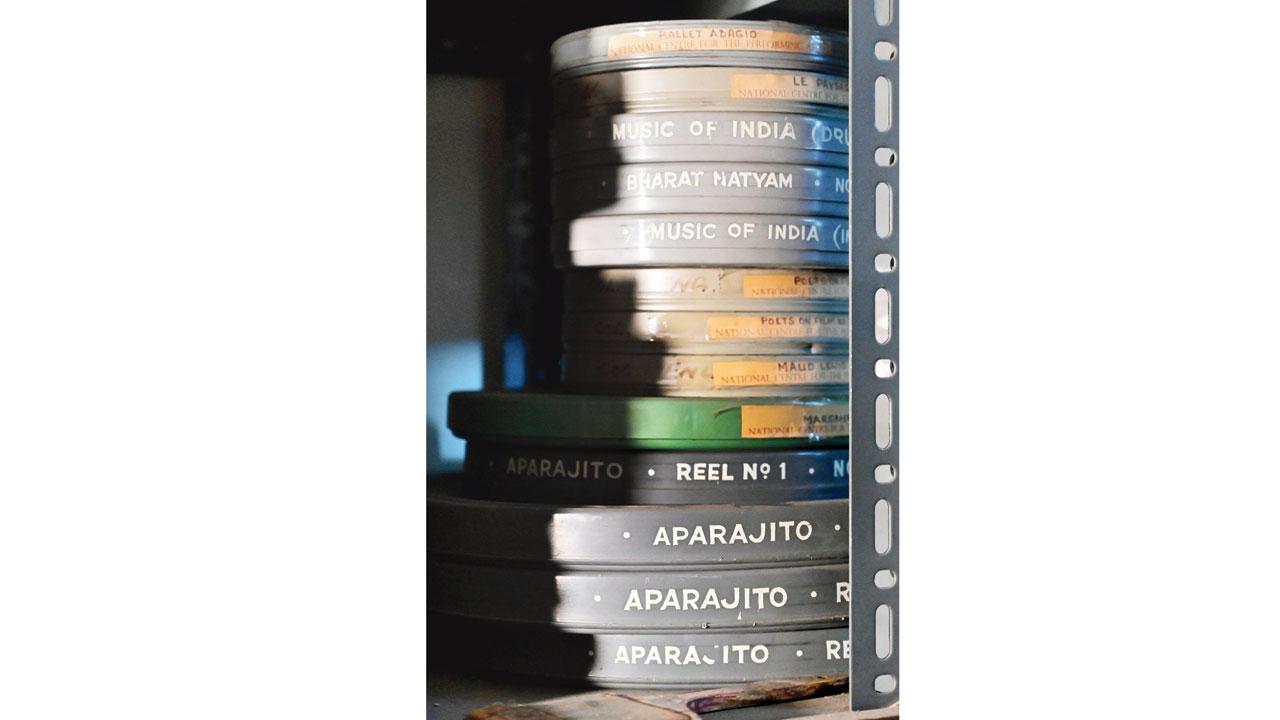
Most of the audio material was birthed in-house at the Little Theatre, which was constructed in 1973 with a studio. “Since live recordings didn’t happen back then, we would request the artistes who performed here to record one of their works for us... this was not necessarily part of the performance,” says Kale. These recordings were then stored in their slowly, growing archive. Folks artistes, he shares, were usually uncomfortable about recording in the studio. “They’d prefer singing in their chaubaras and temples; so we would go to them in our recording van,” he smiles, adding that they would travel several miles to capture that sound that had wowed many. In the days of analogue, all these recordings were done on magnetic tapes. Over time, other theatres at the NCPA also instituted a studio setup, with live performances becoming part of the recording roster. Soon, CDs and DVDs, and hard disks replaced these tapes. Keeping up with the ever-evolving technology is an important part of the work they do, Kale informs us.
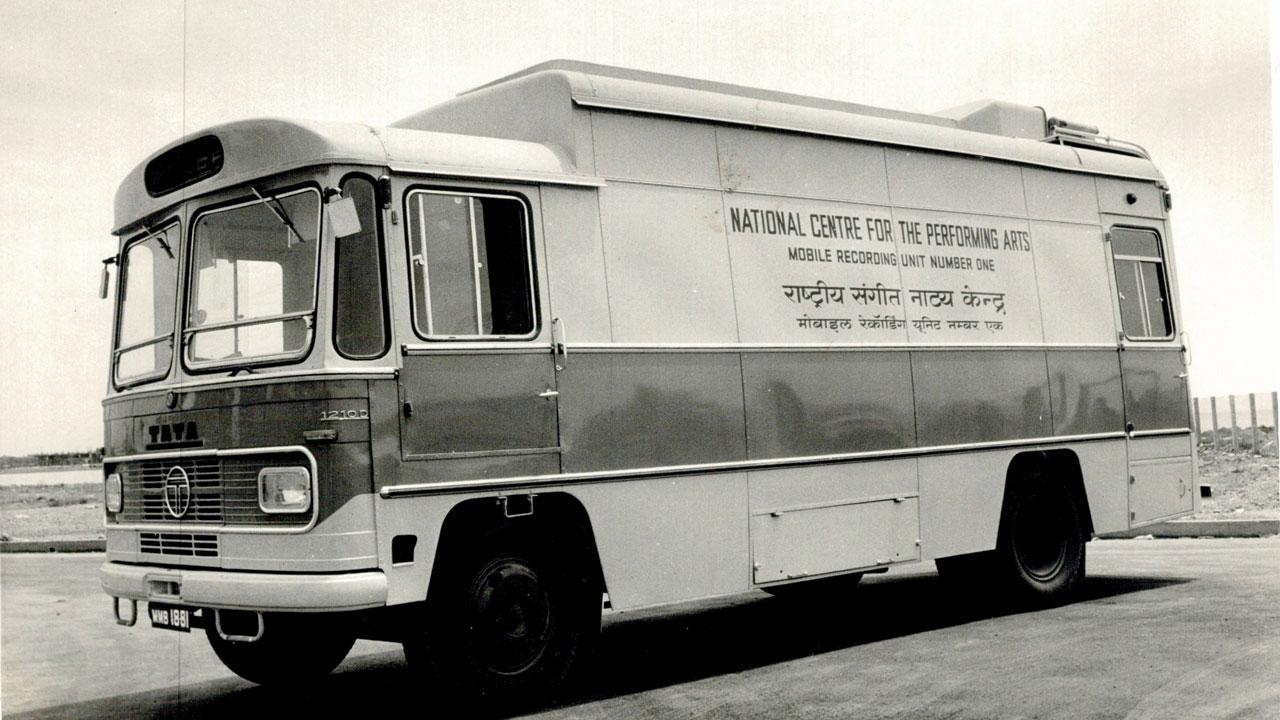
The NCPA mobile recording van
The audio and film vault is situated in a room right above the Little Theatre. Kale leads us up a flight of stairs, and into an alley of archival wealth, boasting of a collection contributed by Stuart and Vivian Liff and the NCPA library. Unlocking a door that’s otherwise strictly out of bounds, Kale walks us into a dimly-lit room where the air conditioner and dehumidifier run 24/7. The room has double walls for thermal insulation, is lined with aluminium foil, and coated with special paints to make the room impervious to weather conditions. When we arrive, the temperature is a cool 23 degrees; when it gets hotter outside, Kale and team increase the cold blast. On a shelf above, we see 16 and 35 mm film reels of The Apu Trilogy, given by the master filmmaker Satyajit Ray to the NCPA. UR Ananthamurthy’s 1970 Kannada drama Samskara, which had the genius of Girish Karnad written all over it, sits a shy distance from it. The wooden cabinets have drawers packed to the brim with tapes and CDs. “Everything here is rare,” says Kale, “The recordings in this vault are not available in the market; not even with the artiste.”
Around 15 years ago, when the Nagra tape recorders, a monorecording technology which had served the NCPA for decades stopped working, and spare parts weren’t available in the country, Kale wrote to the company in Switzerland, requesting if something could be done about it. “My intention was to use the same machine, to reproduce the recordings,” he says. “They wrote back saying, NCPA was our oldest customer and that they would do their best even though they had discontinued its production,” he says, “They eventually manufactured two tape recorders just for us; it’s still in working condition. That’s how I completed the digitisation.” We inform him that he got lucky. “Not me... the artistes did,” he responds.
Other archives to check out
NCPA library
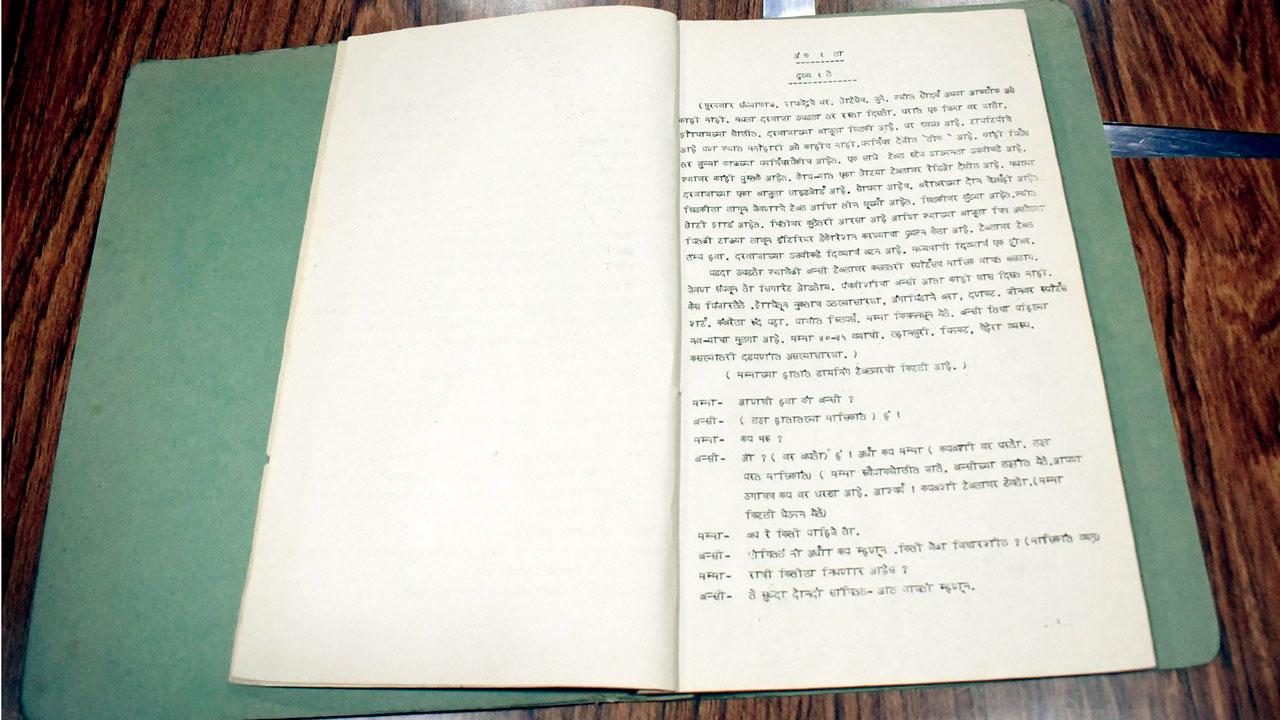
The library will interest anyone who enjoys a good drama. With a brilliant collection of books on acting, theatre, television, and 800+ original scripts of plays written in English, Hindi and Marathi, there is a lot to browse and learn here. Apart from this, the library also has newspaper cuttings on artistes, actors, singers and directors et al. If you are researching on them, or want to know more about their life, it’s a great reason to visit the library.
Stuart-Liff Collection
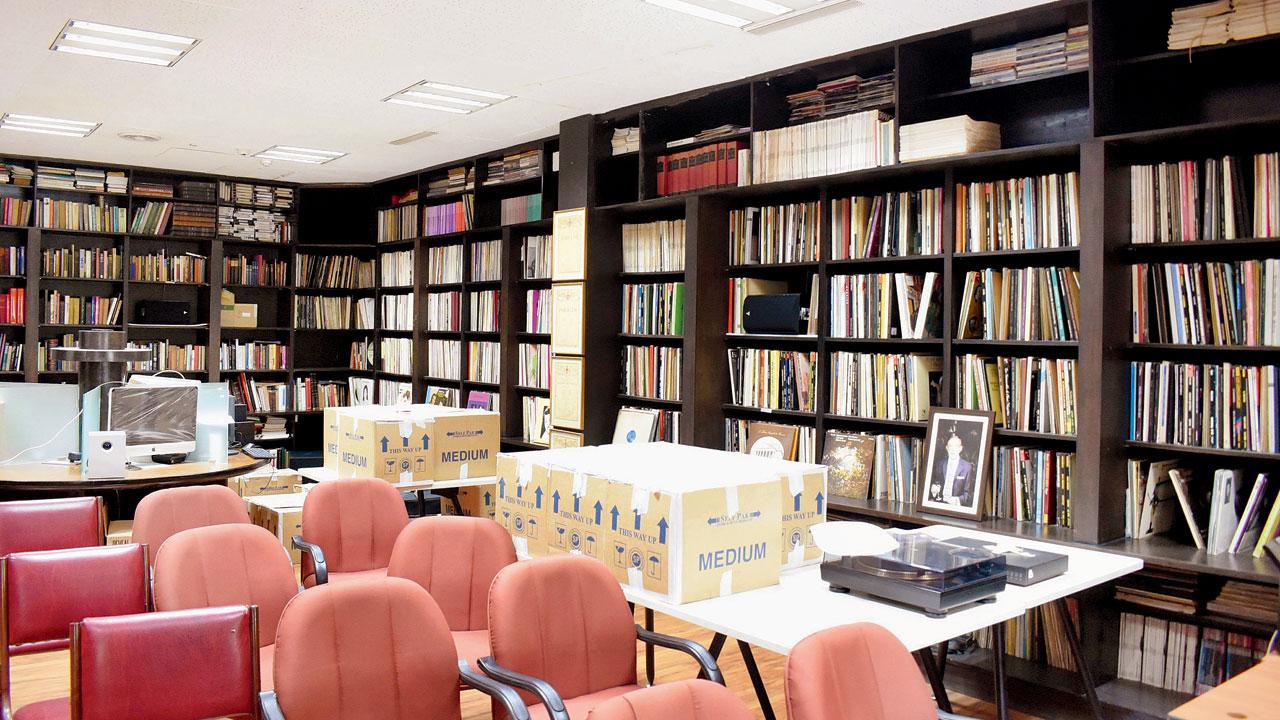
The NCPA is also home to the world-famous Stuart-Liff Collection, comprising 6,000 books and 11,000 LPs on Western classical music. It was first donated by George Stuart and Vivian Liff in 2009 to Khushroo N Suntook, who then made room for it at the performing centre. Recently, another tome of 12,000 CDs from their collection was sent to Mumbai—work on cataloguing it is still underway. The library boasts of rare books, encyclopaedias and memoirs of famous Western Classical artistes, and LPs of singers you probably haven’t heard of yet. Jimmy Bilimoria, consultant of the Vivian Liff Collection, and his wife Hootoxi, consultant at the library, are always around to guide you with the collection, and help you with music appreciation.
To access
The form: https://www.ncpamumbai.com/ncpa-music-library
 Subscribe today by clicking the link and stay updated with the latest news!" Click here!
Subscribe today by clicking the link and stay updated with the latest news!" Click here!







